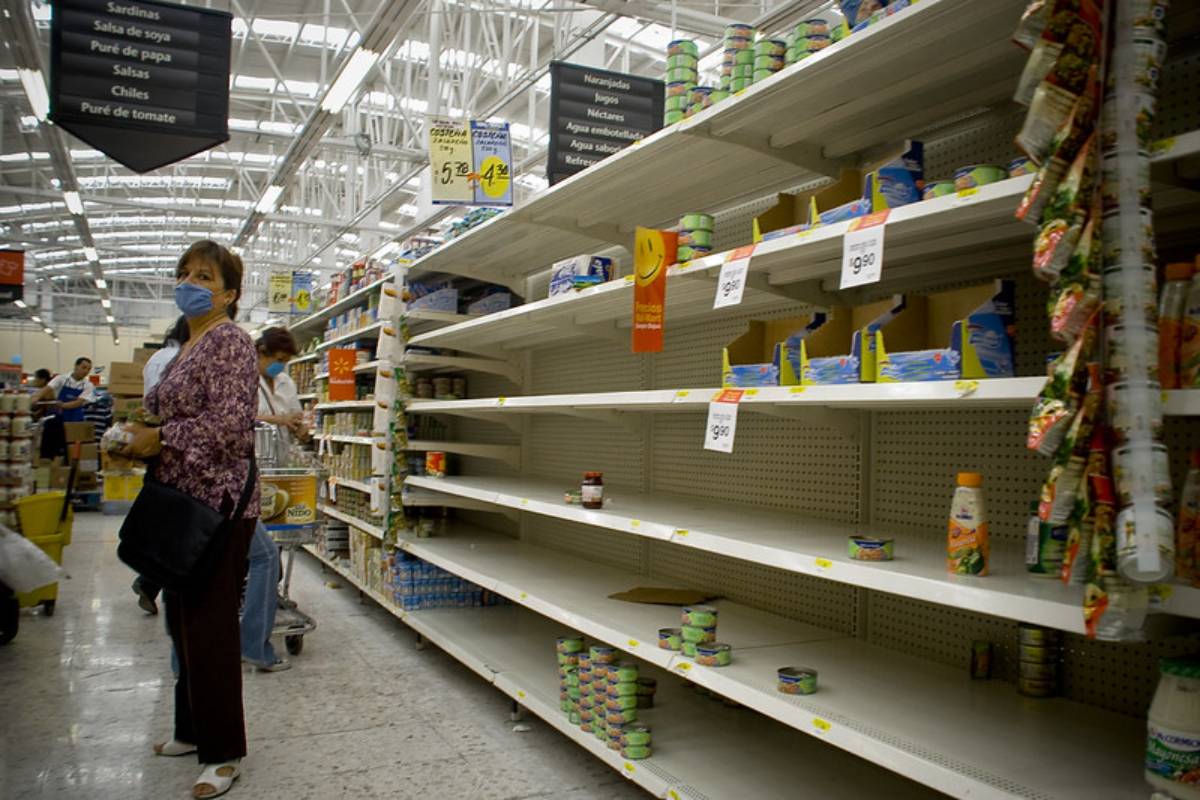LIC reports 3.51% growth in profit after tax for H1 FY 2024
The Board of Directors of Life Insurance Corporation of India (LIC) has approved and adopted the standalone and consolidated financial results for the six months ending 30 September.
As per the data, the share of high-income countries with high inflation has also increased sharply, with about 85.7 percent experiencing severe hikes in food prices.

Representation image
The global patterns of trade, production, and consumption of goods and services are highly unbalanced due to the Russia-Ukraine war. These indices have been damaged severely and expected to worsen the situation of food supply and inflation till the end of 2024. According to a report by World Bank, the number of people affected by the food crisis is expected to increase up to 205.1 million in about 45 countries and union territories.
As per the report by World Bank, the increase in domestic food prices remains high around the world. Between May to August 2022, the data shows a total of 93.3 percent inflation rate in low-income countries, 90.9 percent in lower-middle-income countries, and 93 percent in upper-middle-income countries. A lot of countries have seen inflation levels rise above 5 percent, with many experiencing a double-digit inflation rate.
As per the data, the share of high-income countries with high inflation has also increased sharply, with about 85.7 percent experiencing severe hikes in food prices.
World Bank and its stance amid the Food Crises
Following are the steps taken by the World Bank in order to encourage food and fertilizer production, support vulnerable households and producers, enhance food systems, facilitate greater trade, etc:
1. A project in Bolivia has been set up, worth $300 million, to promote an increase in food security, the adoption of climate-smart agricultural practices, and market access.
2. A loan of $315 million has been sanctioned to support Chad, Ghana, and Sierra Leone to help them prepare against food insecurity and to improve the durability of their food systems.
3. Emergency Food Security and Resilience Support Project fund of $500 million has been granted to support Egypt’s efforts to ensure that every poor and vulnerable household has easy access to bread, and help strengthen the country’s strategies to fight food crises and reforms that will help improve nutritional outcomes.
4. A $130 million loan for Tunisia, seeking to lessen the impact of the Ukraine war by financing vital soft wheat imports and providing emergency support to cover barley imports for dairy production and seeds for small, marginalized farmers for the coming planting season.
5. The $2.3 billion Food Systems Resilience Program for Eastern and Southern Africa helps countries in Eastern and Southern Africa increase the resilience of the region’s food systems and ability to tackle growing food insecurity.
6. The program will enhance inter-agency food crisis response also boost medium- and long-term efforts for resilient agricultural production, sustainable development of natural resources, expanded market access, and a greater focus on food systems resilience in policymaking.
International Monetary Fund (IMF) and its stand
In a press conference by the IMF on the monetary disaster as an outcome of the Russia-Ukraine war, the IMF Managing Director, Kristalina Georgieva, stated that we live in a more shock-prone world than we realize. Strength of collectiveness and unity is required to deal with the aftereffects of such wars.
Georgieva emphasised upon the six major goals initiated by International Monetary Fund and World Bank amid the then ongoing war scenarios. The Goals were as following:
1. Support Vulnerable People
2. Promote Open Trade
3. Mitigate Fertilizer Shortages
4. Support Food Production
5. Invest in Climate-Resilient Agriculture for the Future
6. Coordination for Maximum Impact
He also added that “working closely with the World Bank and other International Financial Institutions, the IMF will provide policy advice, capacity development assistance, and financial support to help further catalyse and complement financing from other institutions as well”.
Advertisement
Trade Relations of India with Russia and Ukraine
The 2.8 percent of India’s total imports are imported from Russia, as per the SBI record on FY22(Fiscal Year 2022)

The report further states that the crude oil prices have gone past $100 per barrel. The fact forecasts uncertainty in global supply disruptions. India could be one of the majorly affected countries as it imports an average of 80 percent of its crude oil from other countries.
Indian Oil Corp (IOC) has stated that it would no longer accept cargoes of Russian crude and Kazakh CPC Blend cargoes on a free-on-board (FOB) basis due to insurance risk.
The SBI (State Bank of India) has announced not to process any transactions involving Russian traders, as it has the danger of being subject to international sanctions imposed on Russia.
Advertisement